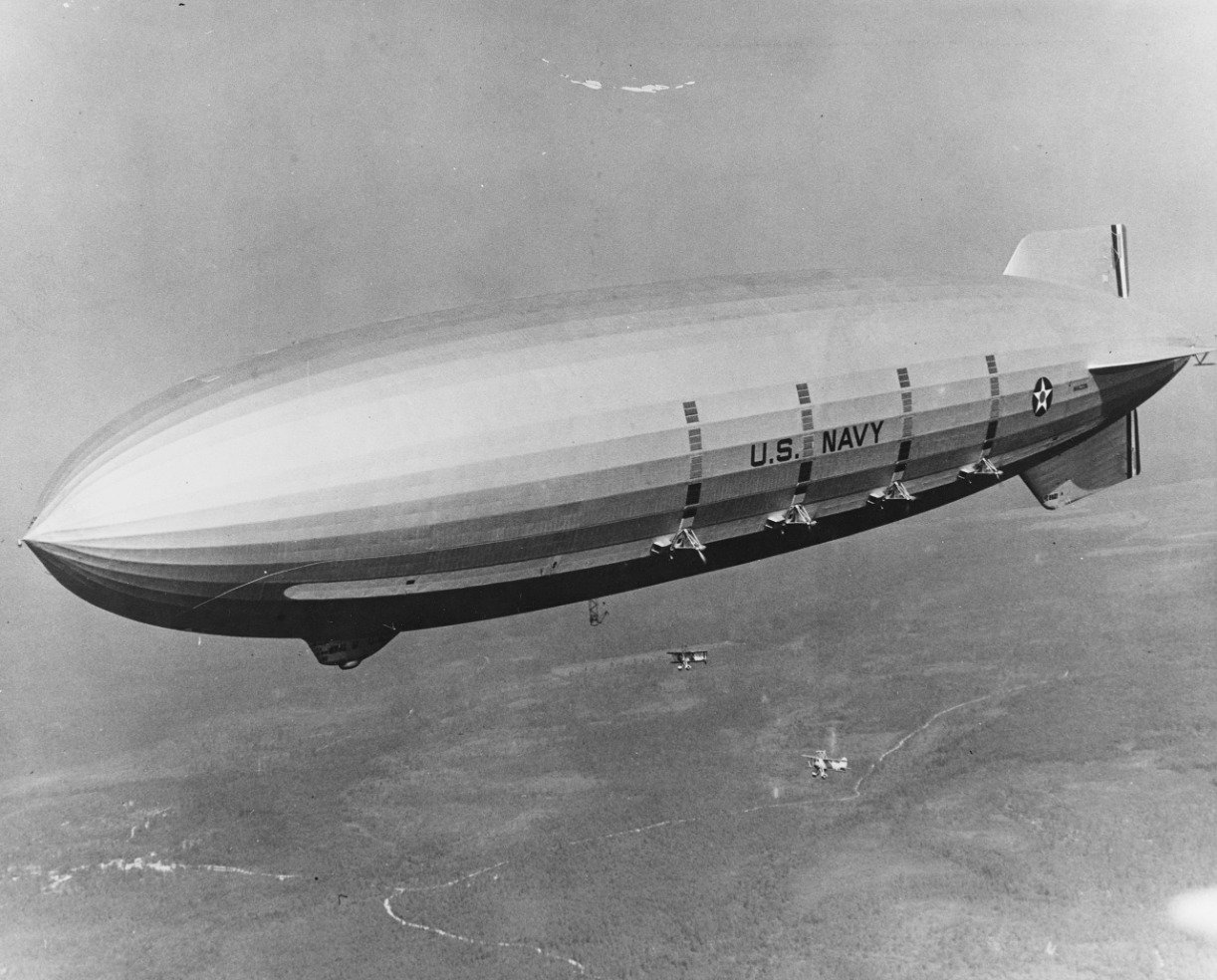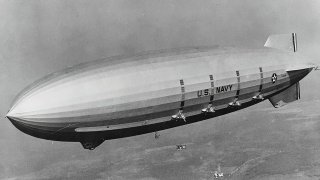The U.S. Navy's Flying Aircraft Carrier Crashed Into the Sea
Nearly a century ago, the U.S. Navy ventured into the skies with the Akron-class airships, USS Akron and USS Macon, pioneering the concept of flying aircraft carriers.
What You Need to Know: Nearly a century ago, the U.S. Navy ventured into the skies with the Akron-class airships, USS Akron and USS Macon, pioneering the concept of flying aircraft carriers. These massive airships, each measuring 785 feet in length, were designed to serve as "eyes of the fleet," capable of carrying and launching smaller aircraft for reconnaissance missions.

Despite their innovative design and potential advantages over traditional ships, both airships met tragic ends.
USS Akron crashed in 1933 due to severe weather, resulting in the loss of 73 crew members, while USS Macon was lost over the Pacific Ocean in 1935. The twin disasters led the Navy to abandon airship development and focus on other aviation technologies.
Akron-Class Primer: The Flying Aircraft Carrier
Perhaps the only weapon more formidable than an aircraft carrier for a modern military is a flying aircraft carrier. Almost one century ago, the U.S. Navy explored the concept of airships through the development of the USS Akron and USS Macon. Representing the crux of the service’s lighter-than-air (LTA) design, these flying aircraft carriers were truly one of a kind when introduced. Although the service life of the Akron-class was short-lived, these airships remain favorites of aviation buffs and military experts alike.
Flying Airships?
Similar to the seagoing aircraft carriers in service today, the Akron-class ships were designed to explore the seas and locate enemy battle fleets. To serve as the “eyes of the fleet,” these airships were developed to be able to traverse greater swaths of territories with the capability of carrying other airframes.
Compared to conventional navy ships, the airships were believed to be cheaper to produce, faster to churn out, and required fewer crew members to operate. All of these advantages led the Navy to lean into the flying aircraft carrier concept. The origins of the Akron-class extend to the First World War, when Germany was tasked with building the U.S. an airship for delivery as part of a reparations agreement. In a joint effort between the U.S.-based Goodyear manufacturer and the German-based Luftschiffbau Zeppelin manufacturer, the Akron-class was born.
USS Akron and USS Macon were commissioned into U.S. Navy service in 1931 and 1933 respectively. Both airships measured 785 feet in length and were capable of cruising between fifty-five to seventy knots. Engineers uniquely incorporated “Deep Rings” in the class’s design, which were essentially a pair of duralumin main rings that proved to be structurally stronger than conventional reinforced rings used on other airship prototypes. Notably, Akron was also equipped with a triple keel.

The most significant feature of the Akron airships was arguably the addition of aircraft hangers. While the Akron airship could carry only three airframes, the Macon could lug up to give aircraft. A sky hook enabled these planes to be launched and recovered. When launching, the airframes were lowered into the slipstream where the pilot could then release the hook and drop them upon starting the engine. Upon recovery, this process was reversed.
The loss of both USS Akron and USS Macon
While the pros of the Akron-class were promising, the early crash of USS Akron led the service to reconsider this airship endeavor. In 1933, Akron plunged 1,000 feet in seconds as a result of strong wings. Akron eventually crashed into the sea, even after its crew decided to dump the water ballast to recover some altitude.
The head of the Navy’s Bureau of Aeronautics and the commander of Naval Air Station Lakehurst were among the seventy-three crew members on board who perished in the crash.
Two years later, the USS Macon crashed over the Pacific Ocean. The loss of both airships forced the Navy to focus on other areas.
About the Author: Maya Carlin
Maya Carlin, National Security Writer with The National Interest, is an analyst with the Center for Security Policy and a former Anna Sobol Levy Fellow at IDC Herzliya in Israel. She has by-lines in many publications, including The National Interest, Jerusalem Post, and Times of Israel. You can follow her on Twitter: @MayaCarlin.
Image Credit: Creative Commons and/or Shutterstock.


